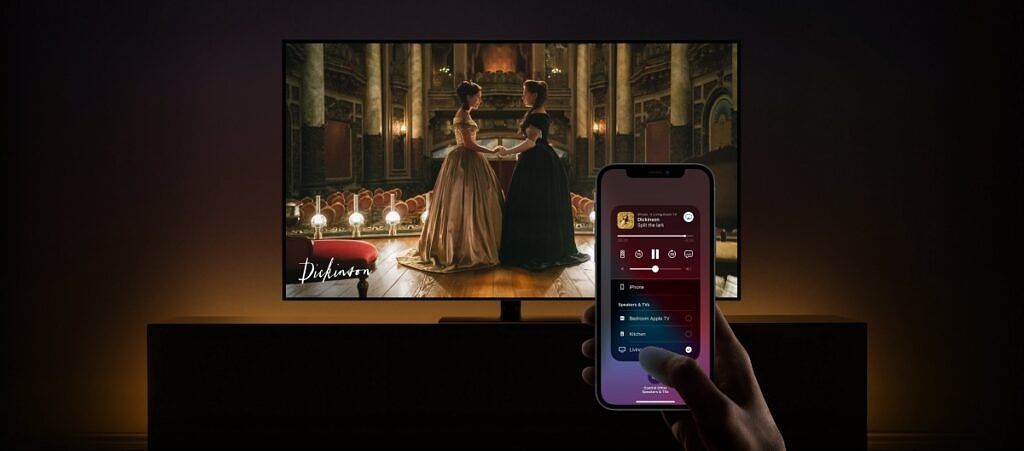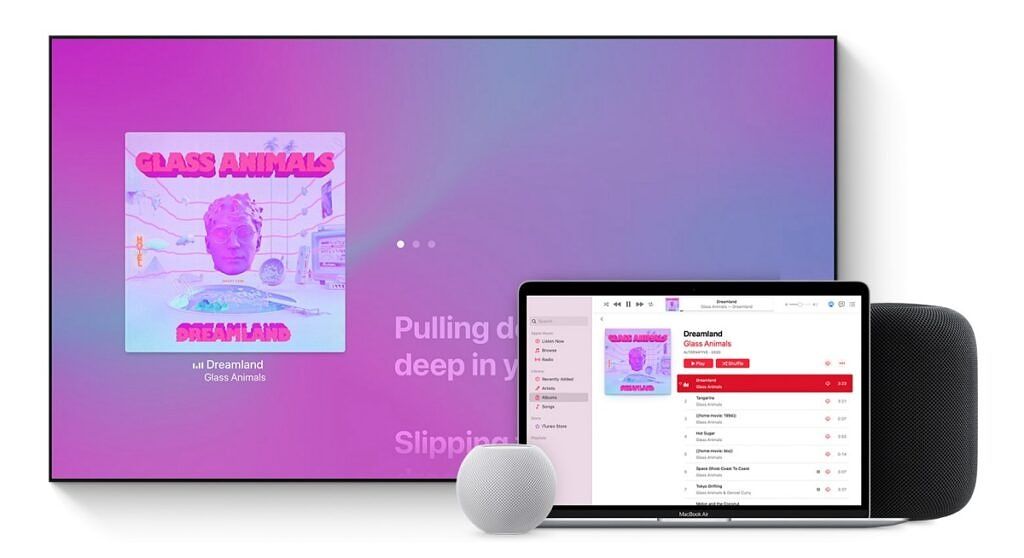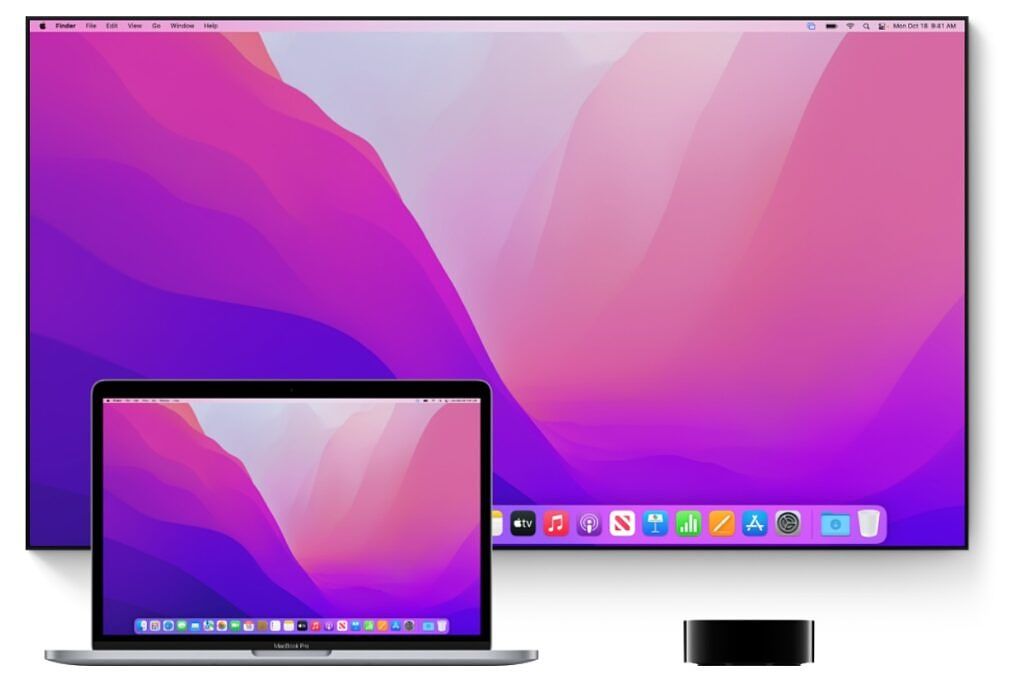AirPlay is a proprietary wireless streaming technology developed by Apple that allows you to stream audio, video, and other media from one device to another over a network. AirPlay enables you to share content from your iPhone, iPad, or Mac with an Apple TV, HomePod, or another compatible device, such as a speaker system or smart TV.
To use AirPlay, you need a device that supports it, such as an Apple TV or a speaker system with built-in AirPlay support. You also need a device that can act as an AirPlay source, such as an iPhone, iPad, or Mac. You can then use the AirPlay feature on your source device to select the AirPlay-compatible device you want to stream to, and the content will be sent wirelessly from the source to that device.
For example, if you have an Apple TV connected to your TV and you want to watch a movie from your iPhone, you can use AirPlay to stream the movie from your iPhone to the Apple TV and watch it on your TV. Similarly, if you have a speaker system with AirPlay support, and you want to listen to music from your Mac, you can use AirPlay to stream the music from your Mac to the speaker system.
AirPlay is one of the easiest ways available to users to stream or mirror content from their Apple devices to a compatible TV, speaker, or Apple TV. This article will explain everything AirPlay can do and how you can use it.
What is AirPlay?
AirPlay is an Apple technology that allows screen mirroring and streaming among devices. Like Chromecast, it works with video and audio content, both available locally on the device and online. You can stream pretty much everything from photos, videos, presentations, music, and podcasts from iPhone, Mac, iPod touch, or iPad.
As AirPlay is deeply baked into Apple devices and any other device marked as “Works with Apple AirPlay,” the experience is completely seamless, and you don’t need any extra software to make it work.
While the original AirPlay was a one-to-one protocol, allowing streaming from your phone to a speaker or an iPad to a TV, AirPlay 2, introduced in 2018, expanded its capabilities. Now, you can use your Apple device to stream audio to multiple speakers simultaneously. Unfortunately, though, you can’t stream a video to multiple devices simultaneously.
AirPlay requires both source and receiver devices to be on the same Wi-Fi network or connected to the same router using Ethernet. Apple introduced a feature called Peer-to-Peer AirPlay in 2014, which works even when both devices are not on the same network or any network, but it doesn’t seem to work with all AirPlay operations.
How is AirPlay different from Bluetooth?
There are a couple of key differences that make AirPlay a better alternative to Bluetooth.
- AirPlay works over Wi-Fi.
- AirPlay can send video as well as audio.
- Much further range, theoretically limitless thanks to the internet.
- AirPlay is capable of a higher quality than Bluetooth, thanks to its reliance on internet-based protocols instead of the limitations of Bluetooth.
Which devices support AirPlay?
Among the Apple devices, you can use AirPlay on all iPhone, iPod touch, iPad, and Mac models from late 2012 or after running the latest version of their operating system. In addition, you can also use AirPlay on iTunes for Windows, but that’s the extent of its Windows support. All these are essentially sender devices, meaning they can initiate a stream or mirror from them to a receiver device.
Compared to the sender devices, which are primarily from Apple, the AirPlay receivers include:
- Select smart TVs from LG, Samsung, Sony, and Vizio.
- Select Roku TVs and streaming devices
- Some Fire TV devices
- Select AV receivers from Arcam, B&O, Bluesound, Bose, B&W, Denon, Integra, JBL, Marantz, Onkyo, Pioneer, Yamaha, and more.
- HomePod models and select speakers from B&O, Bluesound, Bose, Denon, Harman Kardon, JBL, Philips, Sonos, Yamaha, and more.
- 2017 or newer models of Macs running macOS Monterey
You can find the complete list of AirPlay-compatible devices on the Apple website. Additionally, you can also identify an AirPlay-compatible device by the “Works with Apple AirPlay” label.
How to use AirPlay to stream and mirror content
As mentioned, AirPlay is useful for a number of things, including streaming movies, videos, music, and podcasts. You can also use it to mirror your iPad or iPhone screen and mirror or extend your Mac screen.
How to stream content with AirPlay
- When you are looking to stream content from an app on your iPhone, iPad, or Mac, look for the AirPlay icon on the app. Typically, you’ll find it right next to the playback controls. However, you may have to go to options or the share menu to get it in some cases.
- Tap on the AirPlay button, and the Apple device will show a list of compatible devices around you. Pick the device on which you want to AirPlay the content, and you are good to go.
- When you want to stop the AirPlay, tap on the icon again and select the device you are using.
The same instructions work when you want to AirPlay content using iTunes on Windows. In addition, if you are trying to stream audio but don’t see an AirPlay button in the app, you can also use Control Center to trigger AirPlay to compatible speakers. If your speakers are AirPlay 2 compatible, you’ll be able to stream audio on multiple speakers simultaneously.
How to mirror content with AirPlay
- To mirror your iPhone, iPad, or Mac screen on Apple TV or an AirPlay 2-compatible smart TV, open the Control Center on your device and tap on the Screen Mirroring icon. If you are using an older macOS version, instead of a Screen Mirroring icon in the Control Center, you’ll have to click on the AirPlay icon in the menu bar. If you don’t see the AirPlay icon, you’ll have to go to System Preferences > Displays and enable the “Show mirroring options in the menu bar when available” option.
- Once you have clicked on the Screen Mirroring or AirPlay icon, your device will show a list of compatible displays around, and you can choose the one on which you want to mirror the screen.
- If your AirPlay-compatible screen shows a passcode, enter that passcode on your original device.
- Once mirroring has started, you can tap on the Screen Mirroring icon for more options, including using your TV to extend the Mac display.
Limitations
While AirPlay does what it’s supposed to do pretty well, it has some limitations as well. For example, you can only use AirPlay from one app on your Apple device at a time. So you can’t simultaneously AirPlay a movie from the Apple TV app to your TV and AirPlay a song from Apple Music to a speaker.
On top of that, as mentioned, AirPlay is limited to Apple devices. Even though some workarounds and hacks exist for other platforms, they are time-consuming and typically not worth the effort.
AirPlay is a great option for Apple device users who want to stream or mirror content wirelessly. It's especially useful if you're using multiple Apple devices as it's fully integrated into the Apple ecosystem. In addition, Apple has consistently updated and expanded the features of AirPlay, so it continues to be a valuable tool that meets the changing needs of its users.
Do you use AirPlay on your Apple devices? How has your experience been with it? Let us know in the comments section. We also have similar explainers on Miracast and Chromecast.




